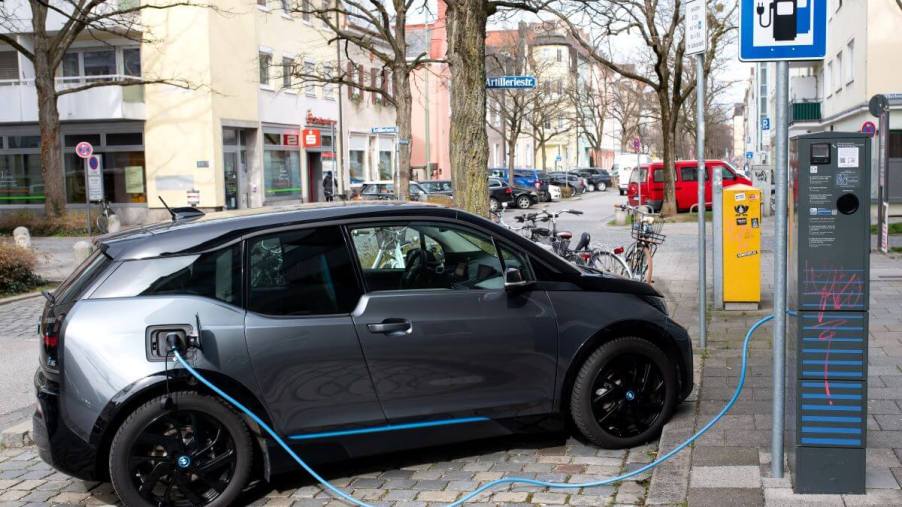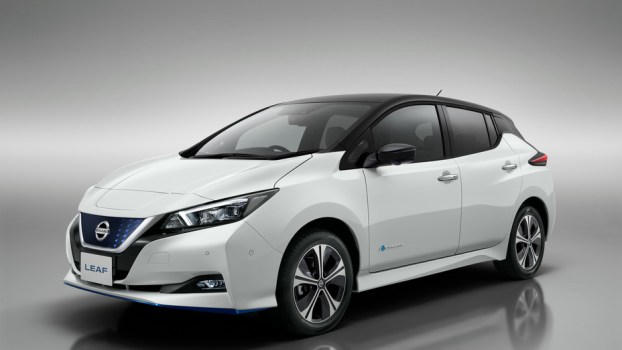
4 Used Electric Cars With Range Extenders
Many early electric vehicles offered range extenders, one of those accessories that would boost the driving range of an electric vehicle. Typically, it does this by installing a small gas engine to keep the EV battery charged while driving. If you’re searching for used cars and want a hybrid or PHEV, you might run across some EVs with range extenders installed. Which models could you find today that have this useful technology? Here are four old EVs that offered range extenders.
1. BMW i3
The BMW i3 model came with or without a range extender, depending on a shopper’s choice. Powering it up are two electric motors generating 170 hp total. Adding the range extender bumps it up to 204 hp with a 0.6-liter two-cylinder gasoline engine. Paired with it is a 22 kWh lithium-ion battery, which helps power the vehicle to go from 0 to 60 mph in 7.8 seconds.
As for the electric range, you can expect the BMW i3 to go 72 miles without the extender and 150 miles with it installed. The gasoline engine running with the motors enables you to get approximately 39 mpg combined, according to Autobytel.
2. Cadillac ELR
Cadillac introduced this range extended version for the 2014 model year with a two-door body style, making the rear seat cramped and shortening the space in the cargo area. The ELR was meant to be a luxurious counterpart to the Chevy Volt, from which Cadillac got its electric-powered design. The brand priced the vehicle at approximately $76,000, which many critics thought was too expensive when you compared it to other EVs on the market at the time.
Powering it up was a 1.4-liter 4-cylinder engine producing 84 hp paired with a 17.1 kWh battery, which enabled it to go from 0 to 60 mph in 6.4 seconds and allowed it to go about 40 miles of electric range. Adding in the gas engine, you could get 39 mpg combined. For even more money, you could add a performance package to include four-piston Brembo brakes, a sport-tuned suspension system, and 20-inch summer tires.
3. Chevy Volt
GM produced its electrified car, the Chevy Volt, back in 2011. This plug-in hybrid car was thought to be the first of its kind to be available on the market as a range-extending vehicle. Despite the manufacturer’s bankruptcy, the Volt continued to get sold until its discontinuation in 2019.
Powering it up was a 1.5-liter 4-cylinder gasoline engine producing 101 hp, and GM paired it with an 18.4 kWh battery and an electric motor that generated 149 hp. The engine was mainly used to charge the battery when the charge was depleted. Regarding driving range, the Volt could go 53 miles, while the engine was rated for 42 mpg combined.
4. Fisker Karma
Every now and then, a vehicle comes and goes with very few people even realizing it even existed; the Fisker Karma was one of them. This model was produced in 2011 and 2012 and had a 2.0-liter 4-cylinder engine, which charged the 20.1 kWh battery. Dual electric motors wrapped around the rear axle and provided a total output of 402 hp and 959 lb-ft of torque (including the output from the engine).
Despite being 5,300 lbs, this model could go from 0 to 60 mph in 7.9 seconds on just the electric powertrain. However, if you add the range-extending engine, it could do the same run in about 5.9 seconds. The driving range for the Karma was 33 miles on a single charge, and the gas engine could get 20 mpg combined.
In short, the accessory helps electric vehicles go a few more miles before having to charge, or in the case of the Karma, Volt, and the ELR, the engine acts as a generator to charge up the battery within the vehicle. While a standard EV does the job fine, having an extra boost for additional miles to get to your destination doesn’t hurt.



